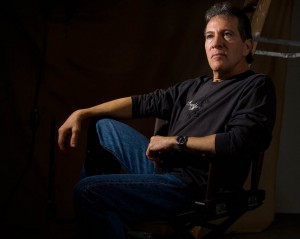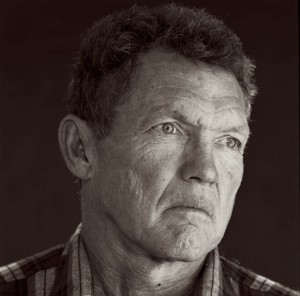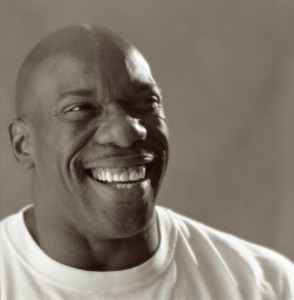People are often confused by the difference between what happens when you use a diffuser and when you use a device to make a light source larger. The language of lighting doesn’t make a good separation between these ways of modifying light. A regular reflector on a strobe or even a clamp light acts to keep light in one direction. Various reflectors modify the spread of the light, so they are known by the degrees they cover: a 30º reflector throws a tighter beam than a 60º reflector. A diffuser takes the light from a reflector, or from the built in reflector in a strobe light like an SB900, and spreads it to cover a larger area, generally everything in front of the light, say 180º. This is what the booty light does. A large light source does do this, but it does something else that is more important. Whatever light source you use, each point on the light source, whether it is 12 inches across or 12 feet across, lights each and every point on the subject, unless that point is shadowed by something between the light and the subject. So if you have a face the nose will throw a shadow with a small light source since the nose will block all of the light coming from the small light source. If you have a large light source the nose will block some of the light source, but not all of it, because there will be part of the larger light source that isn’t blocked by the nose. So
you get softer gradation, because only some of the light is blocked by anything between the subject and the light, and you have reduced, or no, shadowing. How soft the light is depends on the size of the light source. Other factors include the distance from the subject to the light source and how translucent the fabric in the large light source is. A very translucent fabric creates both a hard and softened effect, because you can see the effect of the small light source in the larger light source. In the same way a silver fabric doesn’t spread light in an umbrella as much as a white satin fabric. The basic tools to make large light sources are umbrellas, soft boxes and light panels. The key is the size of the source more than the shape. So a 60-inch umbrella and a 4X5 foot soft box will make very similar light, and a 1X1.5-foot soft box will give a very different quality of light. In my classes I stress using large light sources, because of the quality of light they create. For more information you might want to check out this article.
I have a new article on Architectural Lighting coming out in the May/June issue of Photo Technique Magazine . I hope you’ll check it out. I also hope you’ll check out my classes at BetterPhoto.
An Introduction to Photographic Lighting
Portrait Lighting on Location and in the Studio
Business to Business: Commercial Photography
Thanks, John Siskin


